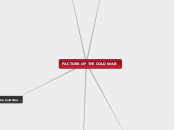a Sean Embury 10 éve
1484
COLD WAR
The Cold War, spanning from 1945 to 1991, was a prolonged period of tension between the United States and the Soviet Union, primarily driven by their conflicting ideologies: capitalism and communism.

a Sean Embury 10 éve
1484

Még több ilyen